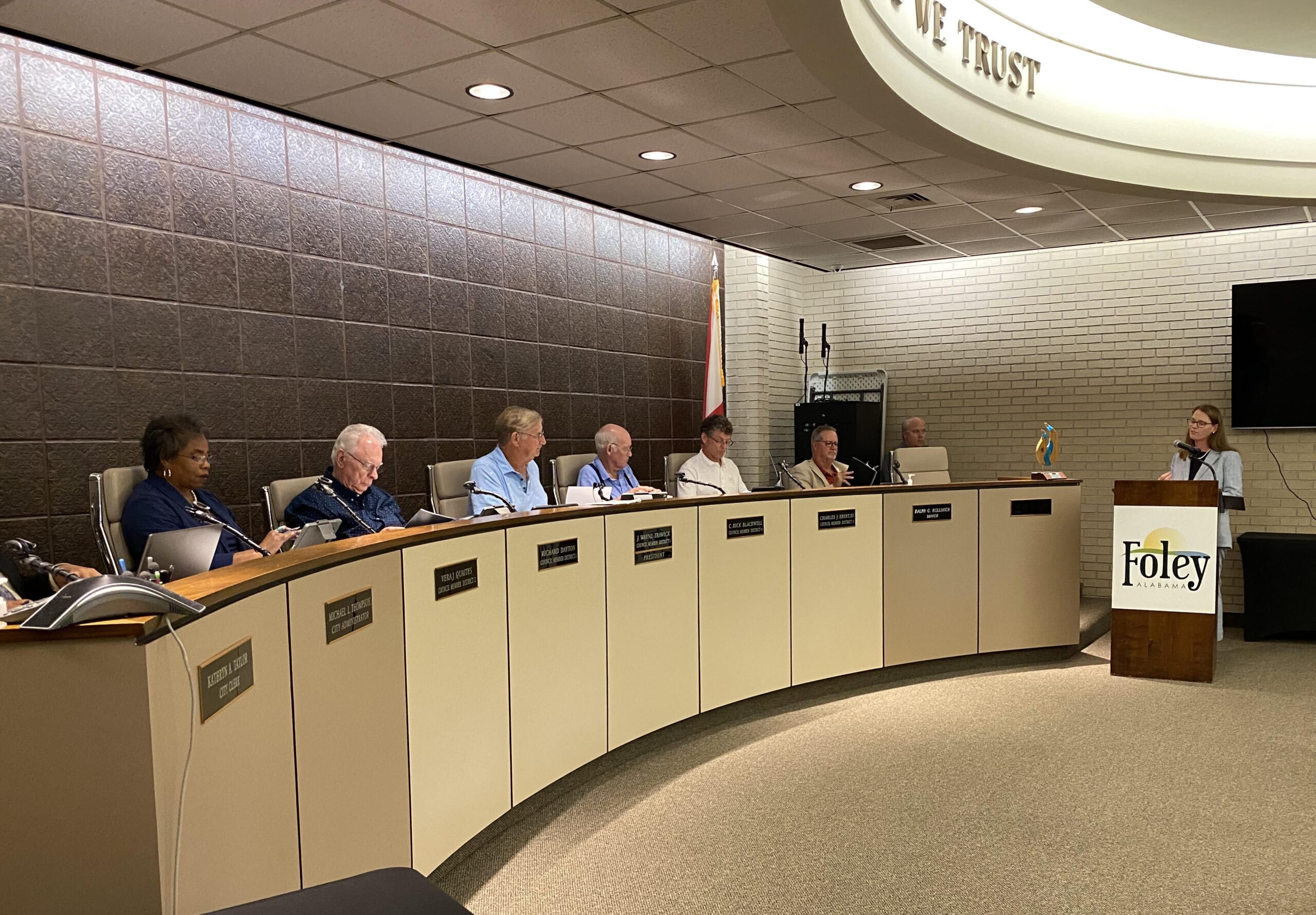FOLEY – Foley’s first strategic plan to help guide municipal growth over the next five years, is in place following action by the City Council.
The council voted to approve the plan. City officials, residents and consultants have been working since last year to prepare the plan.
Mayor Ralph Hellmich said Foley has always prepared for the future, but has never had a specific strategic plan.
“We’ve had a lot of organizational plans in various sectors, such as public safety. We had a sidewalk plan, but we’ve never had a strategic plan before,” Hellmich said. “I believe that our council, myself and the city staff have been following a strategic plan for years, because I feel our council’s in tune with the population.”
He said the document gives the city a set plan that will also be flexible if changes are needed.
“Having this codified allows us to follow the vision that the council and I are pushing for our city. That way, whoever comes along behind us can also follow the vision, which is also part of the community,” he said. “Being a five-year rolling plan, you have to keep it updated in order to make sure that you can deal with changes.”
Wayne Dyess, Foley executive director for infrastructure and development, said the approval of Foley’s first strategic plan establishes a strong foundation for the city’s future. The plan promotes well-coordinated, planned growth that aligns city services, infrastructure, and public safety to support a high quality of life for residents.
“With a clear vision and strategic priorities, this plan not only guides development but also ensures resources are utilized efficiently to meet the evolving needs of the community,” Dyess said. “By taking a proactive approach, Foley can maintain its unique character while fostering a safe, vibrant, and livable environment—setting the stage for continued success, a resilient local economy, and a thriving community for years to come.”
City officials and consultants began working on the plan in 2023. As part of the process, Foley held a series of public meetings to allow residents to discuss city needs and challenges.
Karen Whichard, a senior consultant with BerryDunn, the company working with Foley on the plan, said residents and city staff members made outstanding contributions to the plan.
“The engagement from the community in this planning development process was really, really strong,” Whichard said. “We started that last fall. We spoke to members of the community in interviews. We had three community forums that were very well attended. We had a community survey with lots of input and some really consistent themes from the community.”
The plan sets priorities for the city. Priorities include maintaining a livable community economic development, community safety, culture, organizational excellence and arts and recreational experiences.
Whichard said the priorities will help maintain the city’s quality of life.
“You have a livable community,” she told council members. “As Foley continues to grow and change, how do you maintain it in that little place that you all love? Economic development, making sure that there’s good jobs and a robust economy for residents. Safety, it’s hard to have a good community that’s not safe, making sure that is a priority. Arts and recreational experiences. You all know that this is such a strong area for this community. So building upon that. And then finally, organizational excellence, the priority area. What makes it all go? How do you take care of your staff? How do you have the right systems and resources in place and to do the things that you all want to do as a community.”
Foley is the fastest growing city in Baldwin County, according to a 2024 population estimate by the World Population Review. The study found that the city’s population was 26,617, up from 20,598 in the 2020 census, an increase of 6.08% a year.
Whichard said the plan will help the city plan for continued growth.
“This is intended to be a five-year plan,” she said. “It’s intended to align to your budget process and for your updates to the community.”



